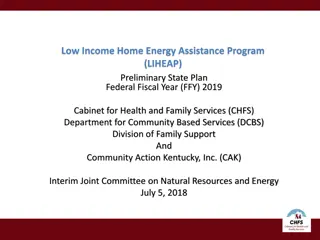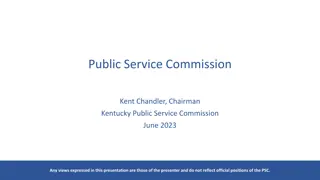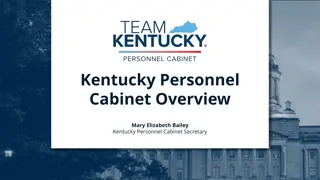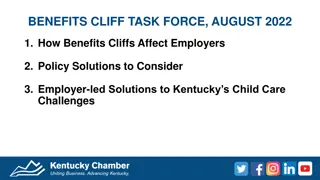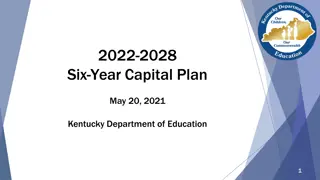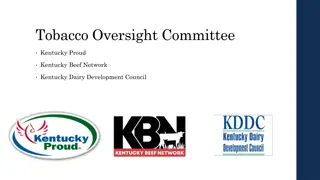Child Care Challenges in Kentucky: The Child Care Cliff
Explore the landscape of child care in Kentucky, revealing the challenges families face with the Child Care Cliff. Discover statistics on child care centers, family child care homes, and the average cost of child care in Kentucky. Understand the importance of the Child Care Assistance Program (CCAP) and learn about the significant number of Kentuckians residing in child care deserts.
Download Presentation

Please find below an Image/Link to download the presentation.
The content on the website is provided AS IS for your information and personal use only. It may not be sold, licensed, or shared on other websites without obtaining consent from the author. Download presentation by click this link. If you encounter any issues during the download, it is possible that the publisher has removed the file from their server.
E N D
Presentation Transcript
The Child Care Cliff: For Families and Kentucky KY Benefit Cliff Task Force Wednesday, August 24th, 2022
Benjamin Gies, Director of Early Childhood Policy and Practice The Prichard Committee for Academic Excellence Introductions Dr. Sarah Vanover, Policy and Research Director Kentucky Youth Advocates Mandy Simpson, Chief Policy Officer Metro United Way
Child Care in Kentucky Child Care Centers Family Child Care Homes Regulated Family, Friend, and Neighbor Care (possibly in the child s home) This Photo by Unknown Author is licensed under CC BY
Number of Child Care Centers 1,698 Available Child Care Number of Licensed or Certified Family Child Care Homes 243 Number of Registered Child Care Providers (Family, Friends, or Neighbors) 38 Maximum Capacity of Child Care Slots in the State 158,264 Remember, Capacity Does Not Equal Enrollment!
The US Department of Health and Human Services advises the benchmark to be 7% of a family s income go towards child care expenses. Cost of Care
Child Care Assistance Program (CCAP) CCAP is a workforce support. To be eligible, the parents must be working, full-time students, or actively looking for employment.
More than half of all Kentuckians live in a child care desert. A child care desert is a community that contains either no child care providers or an insufficient number of child care slots. Source: Kentucky KIDS COUNT Project
$250 $200 Average Weekly Cost of Child Care in Kentucky $150 $100 $50 2019 Market Rate Study by University of Kentucky $0 Infant/Toddlers Preschool School Age Urban Rural *Significant inflation has occurred statewide in the past year.
Cost of Care With and Without CCAP An example based on the average cost of child care in KY:
At a 12-month reauthorization visit, the family is notified that they no longer qualify for CCAP. Kentucky s Current Transition Plan For 6-months, the family will receive 50% of the subsidy amount as they transition out of the program. EX: The family transitions from paying $140 per month to $400 per month (for 6 months) to $800 per month. This is an increase of $660 per month over a 7-month time period.
American Rescue Plan granted Kentucky $763 Million for Child Care $470 Million dedicated to Sustainability Payments for Programs Sustainability Payments End in September 2023 $293 Million Dedicated to Flexible Funding, including CCAP Flexible Funding Ends in September 2024 Upcoming Child Care Funding Cliff
Prior to the COVID 19 Pandemic, Kentucky received just over $100 Million in federal funding per year for child care. During the pandemic, that number increased to just over $1 Billion in funding.
Consequences of the KY Child Care Funding Cliff Programs will not be able to sustain current employee wages. Programs will have to make the choice to reduce staff wages, increase tuition drastically, or close. KY child care capacity will drastically decrease. Parents will make the choice to remain in the workforce or leave employment. Parents may have to leave young children at home alone if they must go to work.
Policy Considerations for Child Care 1 2 3 4 Sustain investment in CCAP reimbursement rates, eligibility, and transition periods Support competitive wages, benefits, and educational opportunities for child care educators Ensure the success of the Employee Child Care Assistance Partnership (House Bill 499) Consider the recommendations of the Early Childhood Task Force
Thank You for Your Time!







